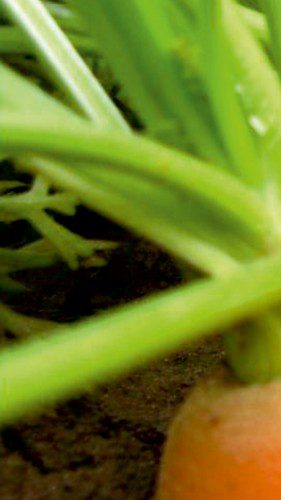Carrot Disease Management
Causal Agent: Alternaria dauci
Distribution: Worldwide
Identification
Alternaria leaf blight lesions are small and commonly found on the margins and tips of carrot leaflets. The lesions are irregular in shape and size, dark brown to black in color. Under favorable conditions, the lesions become numerous and continue to expand until they ultimately coalesce giving the leaf tissue a blighted (burned) appearance. Eventually, the leaflets may shrivel and die. Large lesions can also develop on the petioles and may girdle and kill the leaves. The lesions of Alternaria dauci are more evident initially on the lower leaves.
Life Cycle/ Favourable Environmental conditions for the disease:
The infection by Alternaria dauci is favored by moderate to warm temperatures and prolonged leaf wetness. Typically, as the temperature increases the duration of leaf wetness required for infection to occur decreases. Infection can occur in 8 to 12 hours at temperatures of 16-250C. The fungus sporulates readily on dead necrotic tissue and the spores germinate readily in water droplets and dew.
Control:
1. Use seed that is of high quality
2. Grow seedlings in clean trays with sterilized media. Check regularly for signs of disease and discard any
plants with symptoms.
3. Do not plant carrots too densely in the row; otherwise, the high humidity and prolonged leaf wetness favour the disease
4. Remove crop debris after harvest to prevent continued sporulation.
5. Use crop rotations of 3 years or more.
Pathogens: Pythium violae and Pythium sulcatum
Distribution: worldwide
Identification
Cavity spot is characterized by elliptical to irregularly shaped depressed lesions oriented across the mature carrot taproots. Individual lesions are usually less than 0.5 inch (1.3 cm) in diameter. Infections occur anywhere along the taproot, but lesions tend to be more abundant on the upper third of the root and are often found where lateral roots emerge from the taproot. Lesions begin as pinpoint sunken spots and generally enlarge as roots mature.
Life Cycle/ Favourable Environmental conditions for the disease:
The causal fungus is favored by cool soil temperatures; The incidence of the disease is probably dependent on the number of thick-walled oospores (overwintering spores) in the soil. Pythium sulcatum and P. violae also cause lesions.
Control:
1. Practice 3-year crop rotations with crops other than carrots.
2. Do not over-irrigate, soil moisture control is very critical to reduce the spread of this disease
3. Harvest carrots soon after they mature because older carrots are more susceptible to infection.
Causal Agent: Cercospora carotae
Distribution: Worldwide
Identification
Cercospora leaf blight lesions are initially small necrotic flecks that develop into cream to gray colored lesions with dark colored definitive margins. These lesions are either circular in shape when in the interior of the leaf and more elongate along the leaf margin. Like with Alternaria, as the lesions expand, they can coalesce and lead to leaflet death. Petiole lesions are circular to elliptical in shape and have a lighter colored center.
Life Cycle/ Favourable Environmental conditions for the disease:
Infection by Cercospora carotae requires a minimum of 12 hours of leaf wetness at 20-300C. Under optimal environmental conditions, symptoms will develop in as little as 3 to 5 days. Due to the development of symptoms on younger tissue, this pathogen can be more devastating early in the season when there is limited foliage.
Control:
1. Use disease-free seed or treat seed with fungicides before planting.
2. Removal of crop debris by deep ploughing in the soil.
3. Practice 2-to-3-year crop rotations.










?dpr=off&fmt=jpeg&fit=crop%2C1&wid=210&hei=118)